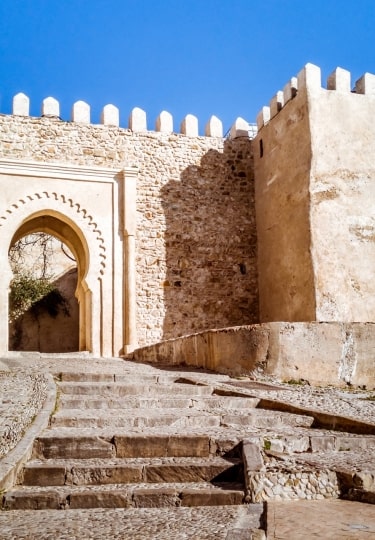With coasts on both the Atlantic Ocean and the Mediterranean Sea, and only an hour’s ferry ride from Spain, Morocco is a rich and varied mix of cultures. The Arab, Moorish, African, and European influences merge as much in its architecture and languages as in the cuisine it is famous for.
You can see this fusion brought to life in the cities, towns and villages of this North African wonderland. From colorful markets full of amazing craftwork to thrilling restaurants with world-class menus—not to mention architecture, history, desert, and mountain scenery—there is something for everyone to enjoy.
Here are eight aspects of culture, cuisine and history that Morocco is known for.
Intricate Medinas
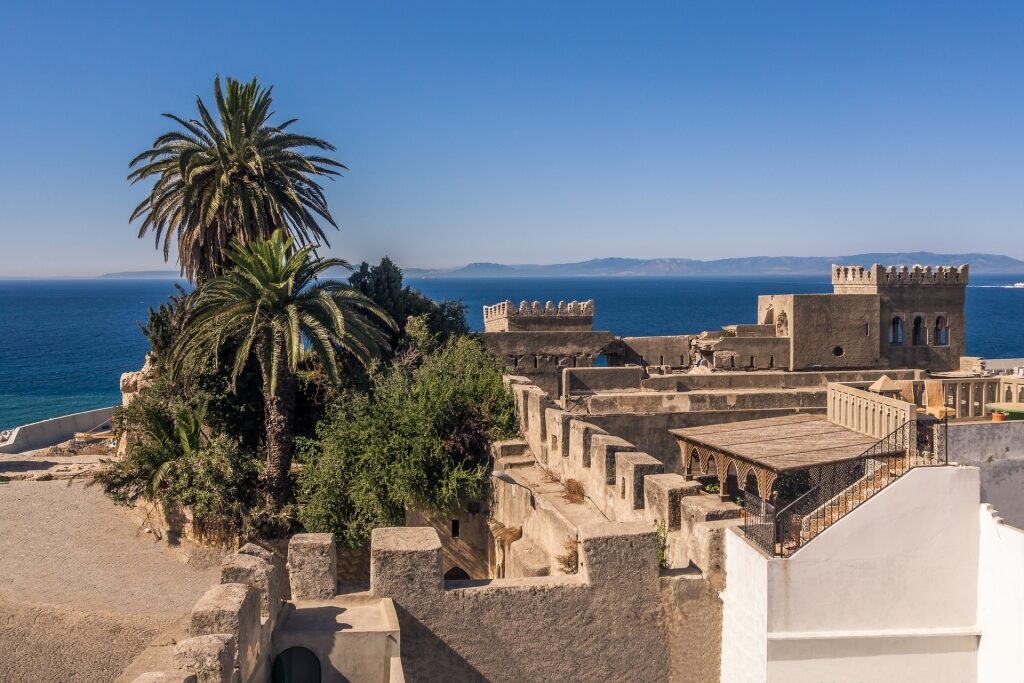
Old Medina, Tangier
Casablanca, Tangier and Chefchaouen have three of the most interesting medinas or old towns in Morocco. These walled settlements in North Africa are named for Medina in Saudi Arabia, the very first model Islamic city.
If you’re used to the grid-based cities of the U.S., the pedestrianized medina can seem like a confusing maze of alleys. Understanding the underlying logic will help you realize there is actually a well-planned arrangement within the enclosing wall.
Typically, the center is the Friday (main) mosque with its landmark towering minaret. Near it are the public or commercial areas: a fountain, hammam (bathhouse), bakery, souk (market), caravanserai (inn), and madrasa (school).
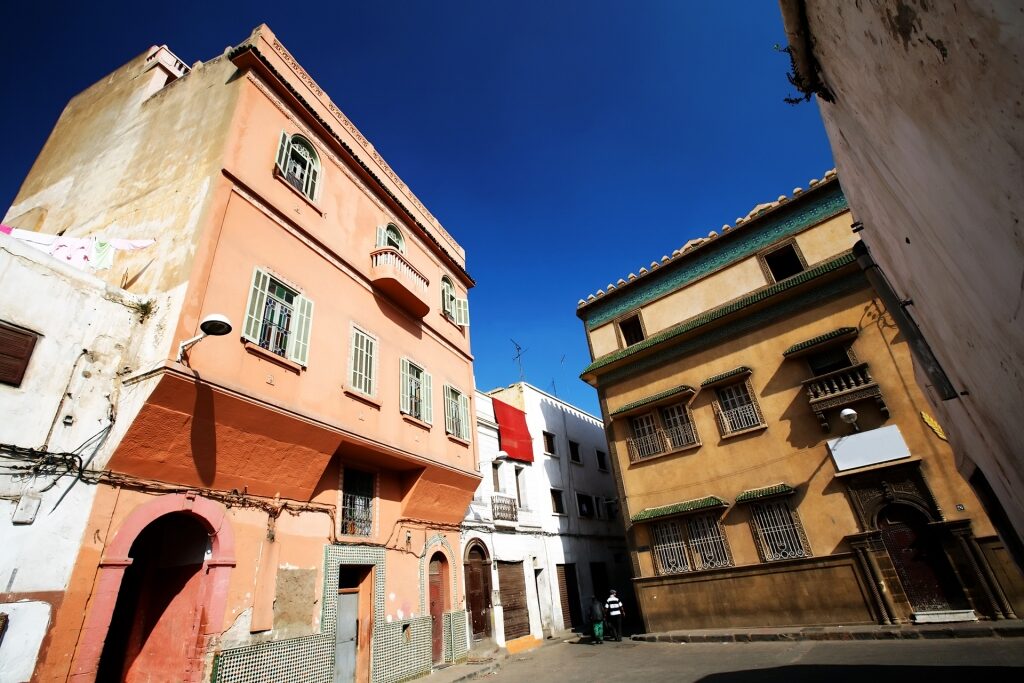
Old Medina, Casablanca
Outside again are the residential areas, traditionally with family homes facing a private courtyard. The whole is linked by narrow alleyways that are a practical way to provide shade.
Every storefront is also a shady place to congregate and socialize. Enjoy the experience of slowing down to walking pace, greeting shopkeepers and passers-by.
Savor the sights, sounds, and smells each medina offers as you explore its varied delights. As you do, you’ll discover the very essence of Morocco.
Labyrinthine Souks
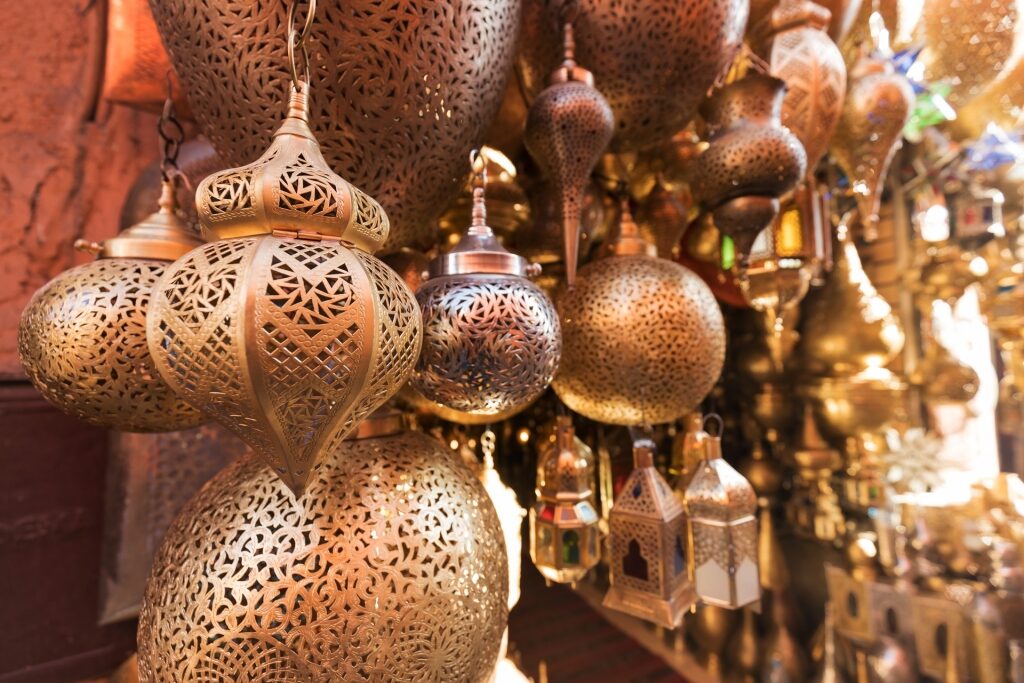
Brassware
What is Morocco known for? If anything, it’s the colorful markets, or souks. For visitors, the heart of every medina is the souk. Here are enough colorful displays of spices, leatherwork, clothes, and brassware to excite every photographer—and entice every shopper.
Everything sold in the souk, from shoes to leather, was once made on site to serve local needs. Of course, tourism has made some big changes to what’s on offer but this authenticity is still in the souk’s spirit.
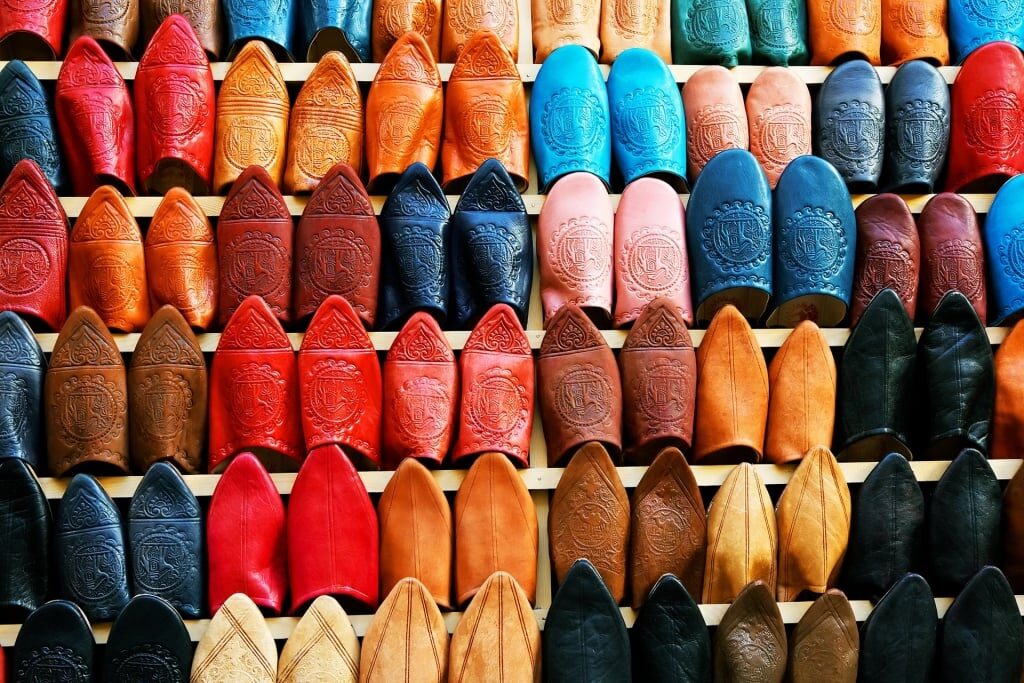
Leather
Morocco recognizes more than 70 different artisan crafts but has given its name to especially fine leather. You will find this in every style and color, from gloves and jackets to shoes and phone protectors.
Whether it’s a quick souvenir, or a more permanent reminder of your visit, the souk is the place to bargain for more riches than even Aladdin could conjure up. Bargaining is at least half the fun in the souk and adds to the memory of anything you do take home.
If you do get lost in the souk, asking a random passer-by for directions may just result in an unexpected detour to yet another shop. Try using the map or GPS on your phone, or any shopkeeper will be happy to help if they’re not too busy.
Exciting Cuisine
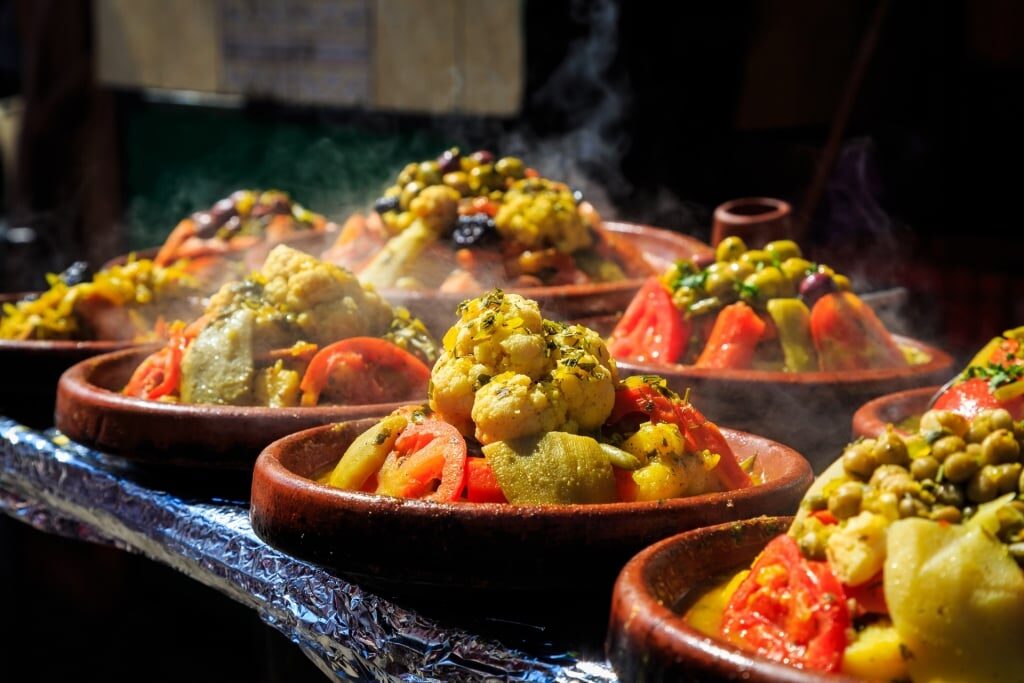
Tagine
Moroccan food is a very special blend of influences from Berber, Arab, Andalusian, and French cuisine. Typical dishes combine fruit and spices with meat such as mutton or seafood from both Atlantic and Mediterranean coasts.
Tagine, the domed clay pot that gives its name to the dish slowly stewed within, is perhaps the most famous Moroccan dish. Casablanca is well known for its fish tagine, although lamb tagine is more common elsewhere.
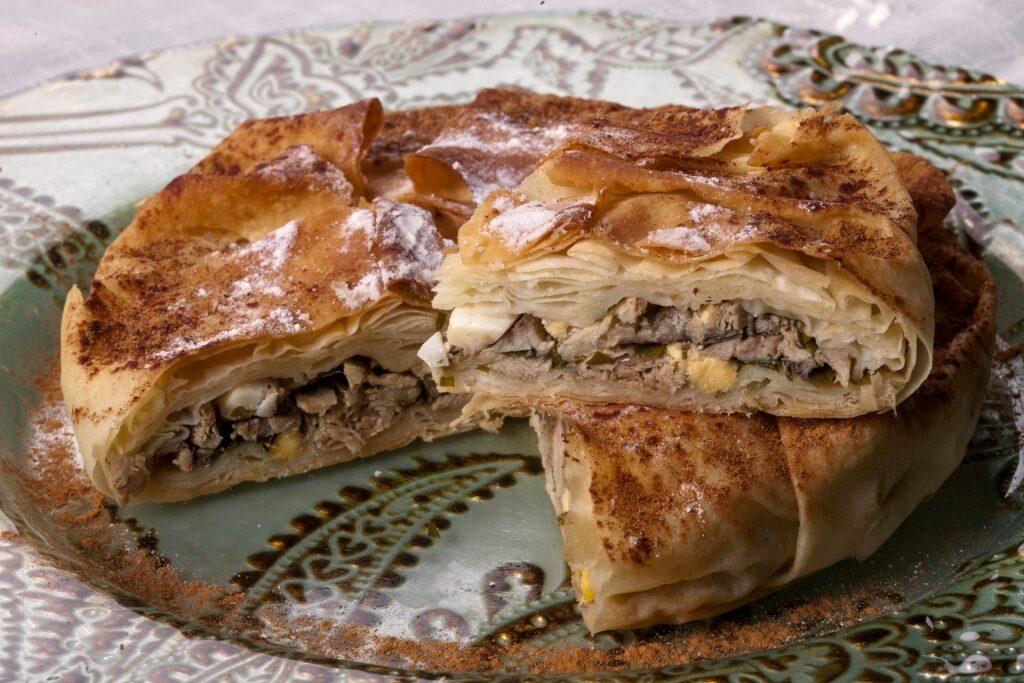
Pastillas
Pastillas (from the Spanish for “small pastry”) are delicious spice-rich parcels of meat or fish. Tangier is said to have the best chicken (traditionally pigeon) pastilla but every other region will argue that point with you.
Abundant crops such as olives, oranges, tomatoes, peppers, figs, and almonds all find their way into recipes. Many ingredients may be dried, once a common way to preserve seasonal foods in the hot climate.
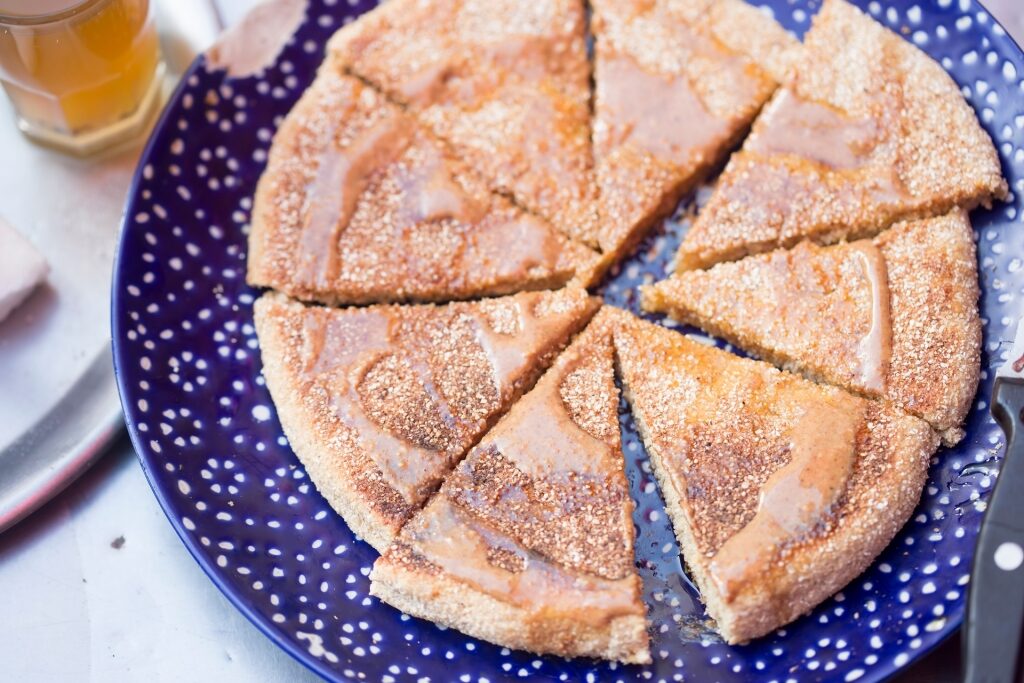
Flatbread
Freshly made flatbread is a staple at every meal and mint tea is the beverage of choice. Tea, boiling hot and made with fresh mint, is served super sweet, but you can ask for the sugar on the side if you prefer.
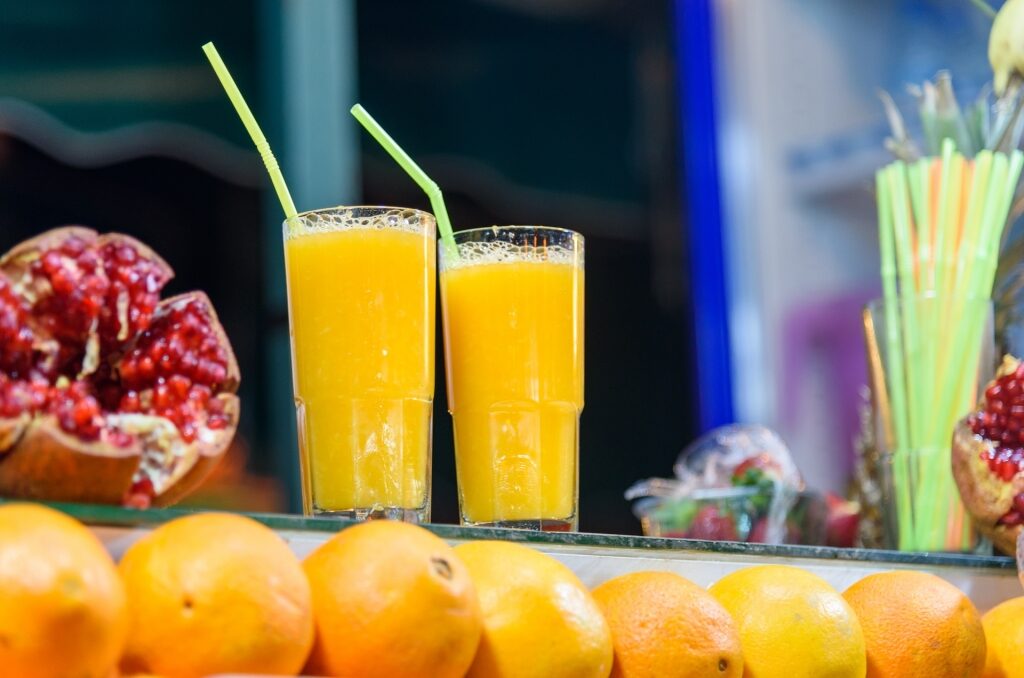
Fresh juice
Morocco grows oranges and clementines in vast quantities for export but many also end up squeezed for fresh fruit juice. Islam’s prohibitions on alcohol mean that such fruit juices and other non-alcoholic drinks are always available; you’ll see carts in markets and squares, offering refreshing juice drinks that are squeezed in front of you.
A cookery class will be a permanent reminder of your time in Morocco. Why not join a class to learn traditional cooking techniques for yourself? Often, a session is preceded by a trip to market first to buy ingredients and experience more.
Exquisite Mosques
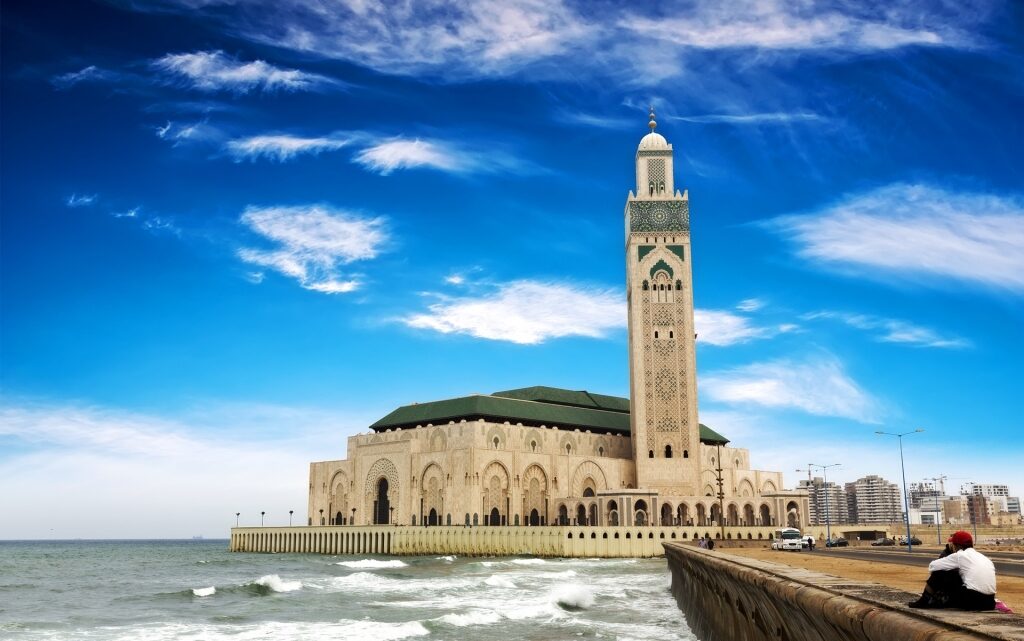
Hassan II, Casablanca
Of the many beautiful mosques in Morocco, Casablanca’s Hassan II may be the most impressive and is certainly the largest. When it opened in 1993, its 690-foot minaret was the tallest in the world, and is still the second highest.
Built out over the sea, the mosque can hold over 100,000 worshippers, but it’s the small details that will enthrall you as a visitor. Thousands of gifted artisans from all over Morocco worked on the wood carving, mosaics, carpets, and other decor.
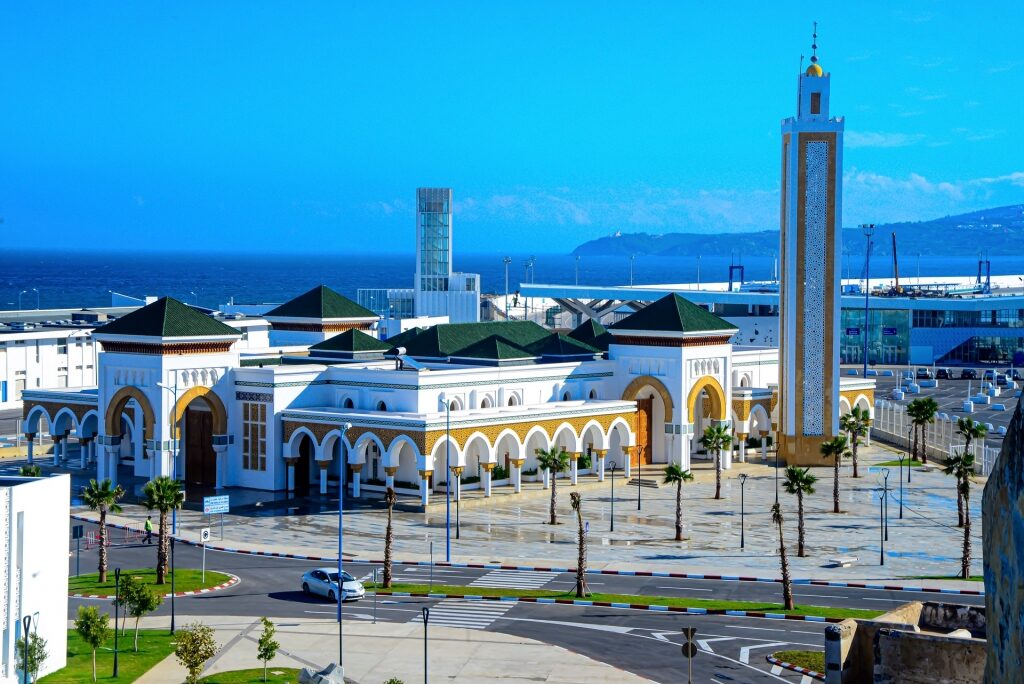
Grand Mosque, Tangier
Tangier’s Grand Mosque has a much longer history, with the present structure dating to the early 1800s and its site once that of a Roman temple. It’s a beautiful building, with a particularly striking minaret and entrance portal.
While not open to non-Muslim visitors, it sits at the heart of the old medina and is still the “Friday” mosque. Nearby, you can study the fountain, hammam, madrasa and other structures of a traditional Islamic town layout.
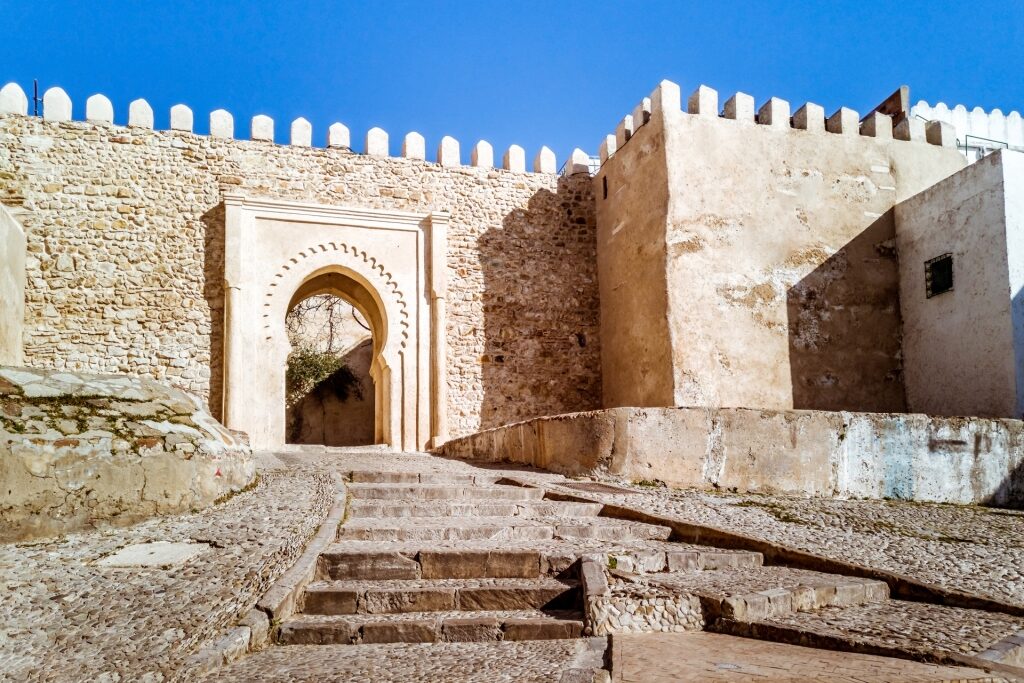
Kasbah Mosque, Tangier
The Kasbah Mosque in Tangier has an even longer history, with its latest restoration in 2015 fortunately revealing much of its past glory. The unusual octagonal minaret and its colorful “zellij” mosaic tilework are well worth seeing.
Chefchaouen’s Spanish Mosque is an entirely different building again. Now in ruins, it was built on a hill over a mile outside the medina, and is popular for sunset views over the old town.
Tiled Hammams
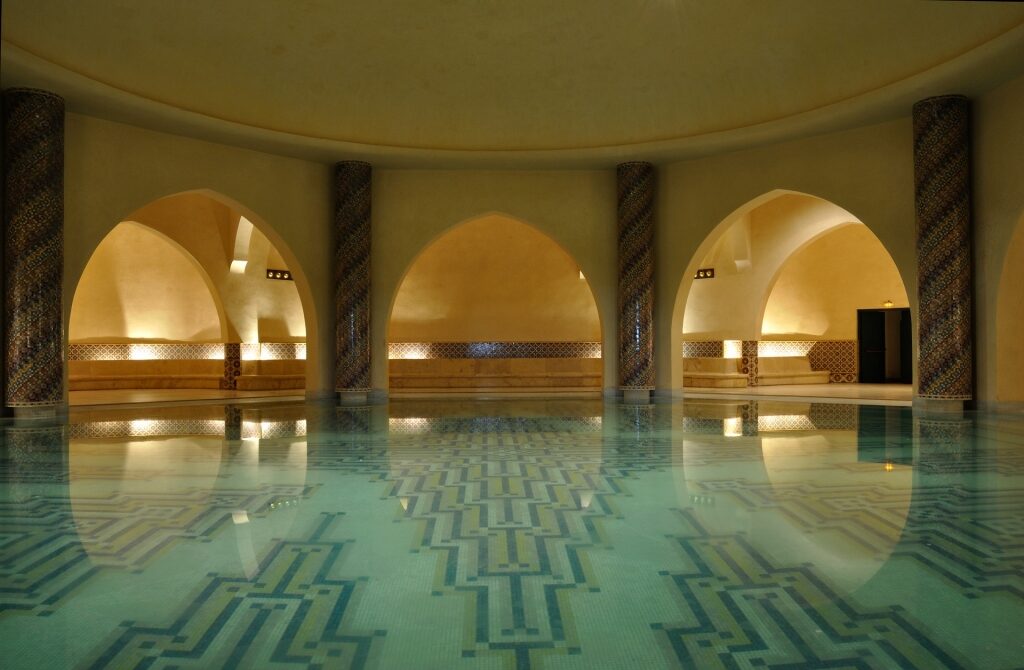
Hammam
The hammam originated in the time when few Moroccans had a bathroom at home. These steam baths were a place to wash but also a social meeting point, often used before going on to the mosque.
Nowadays, they remain one of the few places where a female traveler can meet and talk to Moroccan women; outside the setting of the hammam, you’d rarely have such an encounter. The hammam is also just a great place to be cleansed, massaged and pampered. Many are exquisitely beautiful, too, lined with intricate tiles.
Segregated by gender, many modern hammams are very similar to a spa. As in their American or European equivalents, swimming costumes and robes are worn, although chatting to fellow guests is still common, perhaps more so than in a traditional spa.
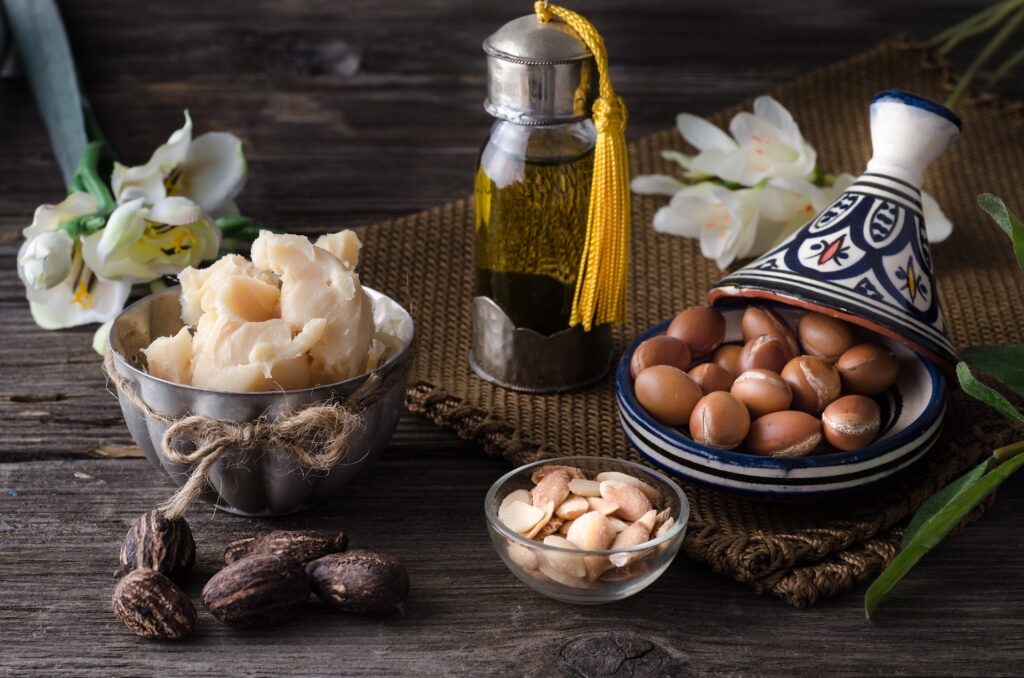
Argan oil
If you don’t want the communal experience, hotels and riads (traditional guest houses) have hammams with all levels of private treatment. One of the most distinctive of these is Morocco’s argan oil, a skin-moisturizing oil that few visitors leave without sampling.
Argan is a particularly luxuriant oil, and makes a great souvenir to take home, for both skin and hair treatments.
Legendary Casablanca

Cathédrale de Sacré Coeur, Casablanca
The meld of French architecture, Arab culture and lingering Hollywood romance make for a fascinating combination in Casablanca.
Sights such as the 18th-century medina, the beautiful art deco Cathédrale de Sacré Coeur, and the Morocco Mall, the biggest in Africa, could not be more different.
For anyone enchanted by the romance of Hollywood, one of the best things to do in Casablanca is to visit Rick’s Cafe, a 2004 recreation of Humphrey Bogart’s “gin joint”. The bar’s pianist plays “As Time Goes By” for added atmosphere.
Rick’s is against the wall of the medina, inside which you will find the art deco Cinema Rialto. The medina’s many picturesque shops can easily lead you astray on your way to the vast Hassan II mosque.
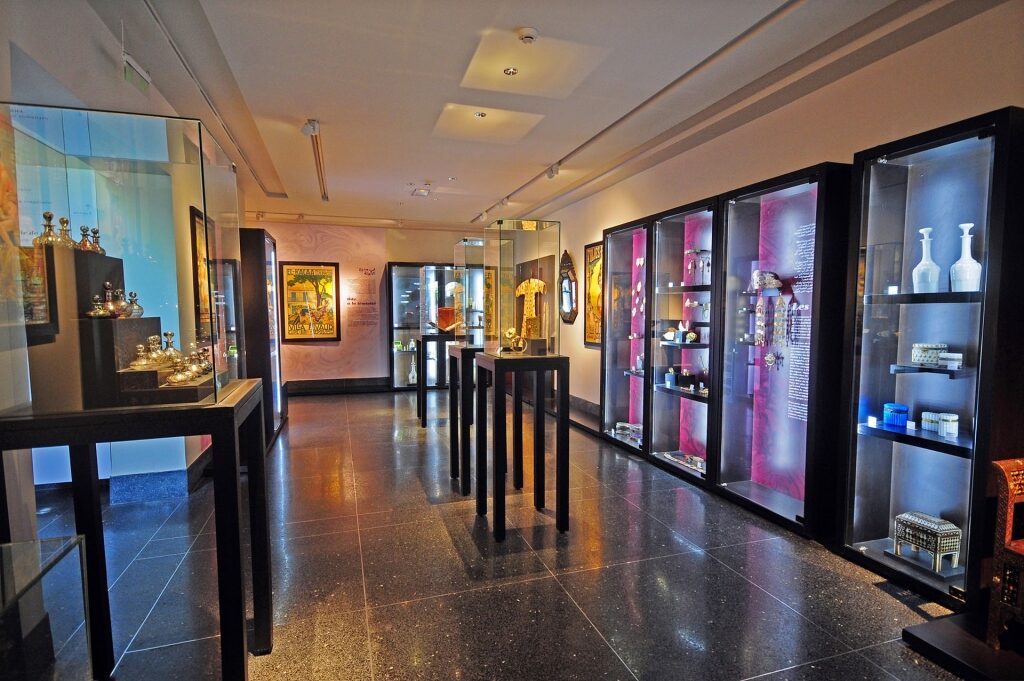
Abderrahman Slaoui Foundation Museum Photo by Musée Abderrahman Slaoui on Wikimedia Commons, licensed under CC BY-SA 3.0
Also worth a visit is the Abderrahman Slaoui Foundation Museum, a tiny showcase of Moroccan art. Displays include beautiful vintage “Orientalist” posters and exquisite traditional Berber and gold jewelry.
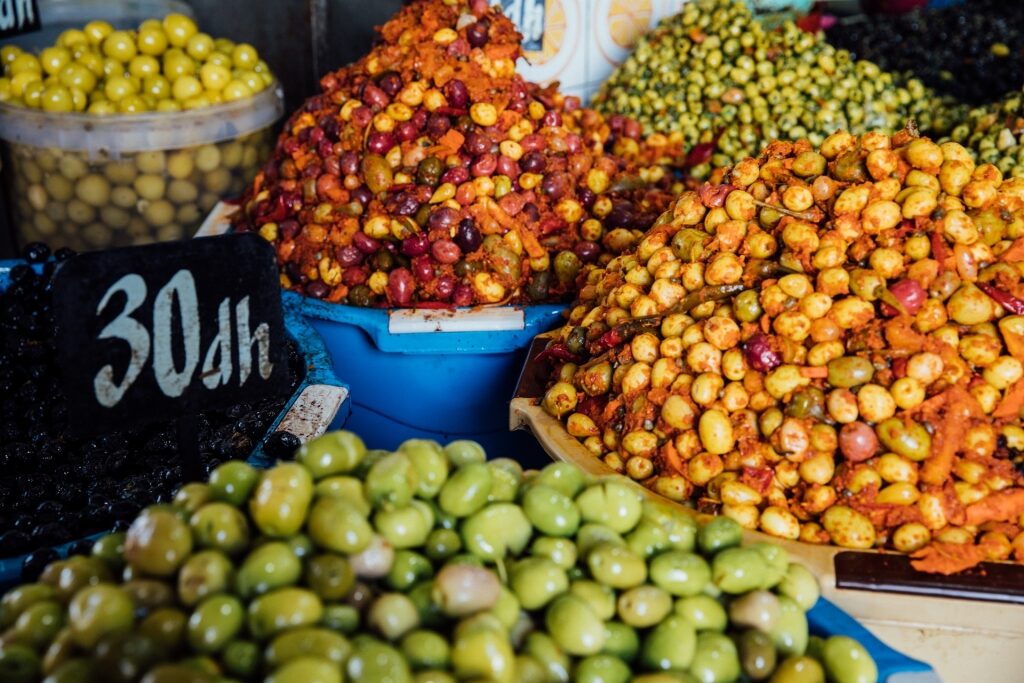
Quartier Habous, Casablanca
The French have left their own legacy in the lovely architecture of Quartier Habous, famous for its olive market. French architects worked with the local Habous, the religious authority that regulates life in the medina, to create its neo-Moorish style.
The market has plenty of the usual souvenirs such as crafts and rugs, leather and spice boxes. It is also a great place to find traditional Moroccan clothes, perfect for robes and loungewear.
Modern Casablanca offers more upmarket shopping in its many malls, as well as impressive residential areas, fashionable Moroccan beaches and busy nightclubs. A bike ride along the Corniche is the perfect way to take in more of the city and soak up its atmosphere.
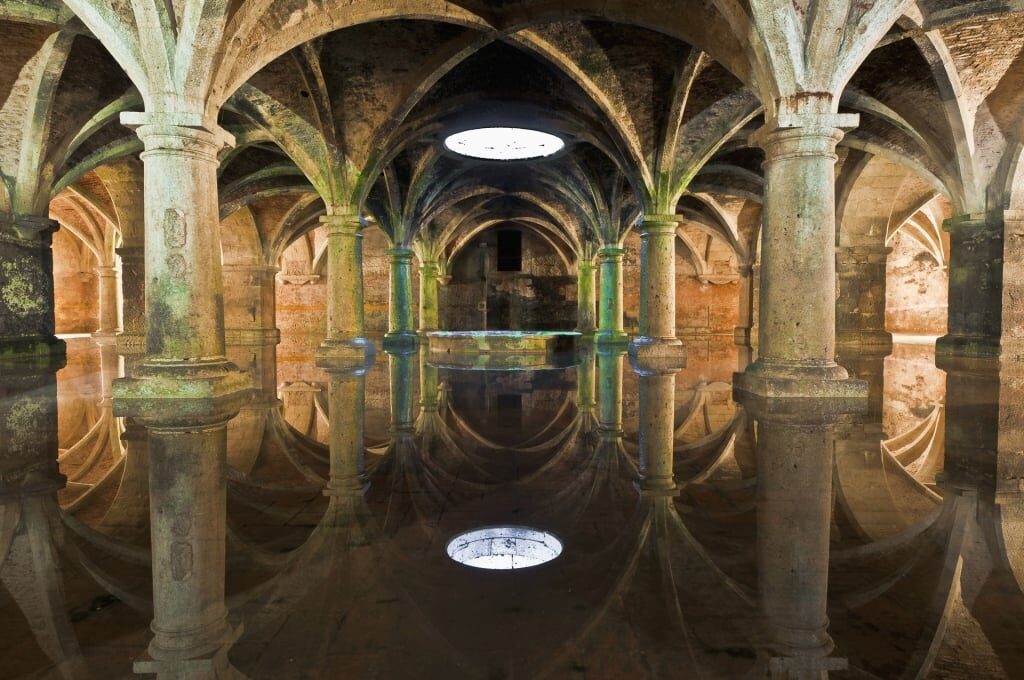
Portuguese Cistern, El Jadida
Outside Casablanca, the Portuguese Cistern in El Jadida’s medina was declared a UNESCO World Heritage Site in 2004. Visiting this underground reservoir is one of the best things to do in Morocco, with its many-arched ceilings and glistening water.
Tantalizing Tangier
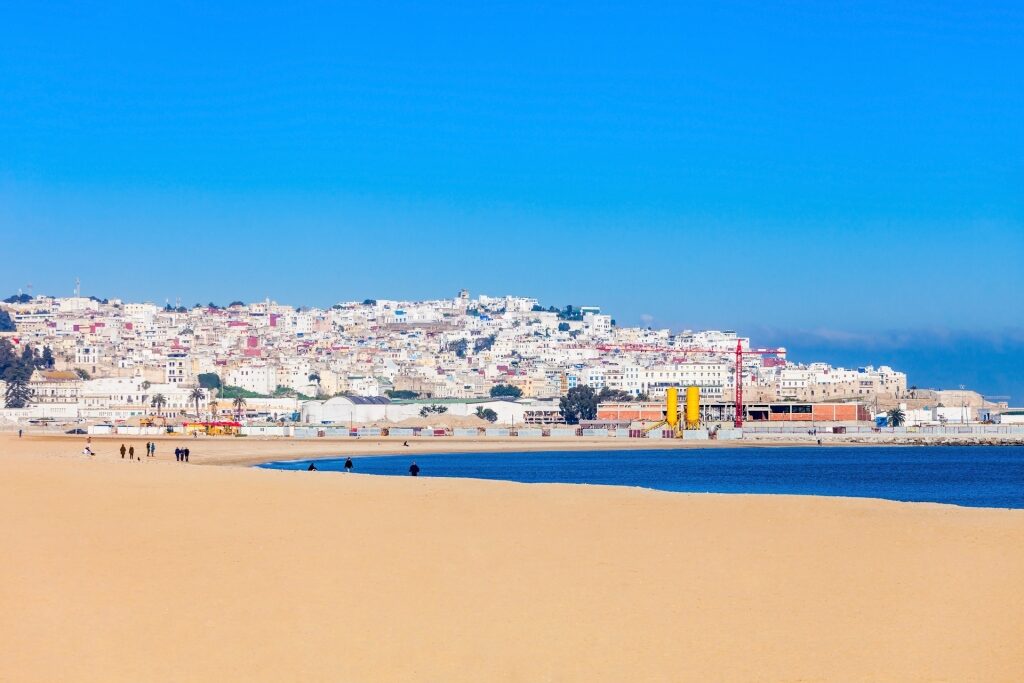
Tangier
For every movie fan who makes a pilgrimage to Rick’s Café in Casablanca, there’s a book fan paying homage in the Tanger Inn in Tangier. This hotel and pub was the haunt of writers Jack Kerouac, Allan Ginsberg, and William S. Burroughs.
Today’s Tangier is, of course, a different city to the one that “Beat Generation” experienced but it remains stimulating, colorful and exciting. It’s a port city, linking Europe and Africa, mixing Mediterranean and Arabian cultures.
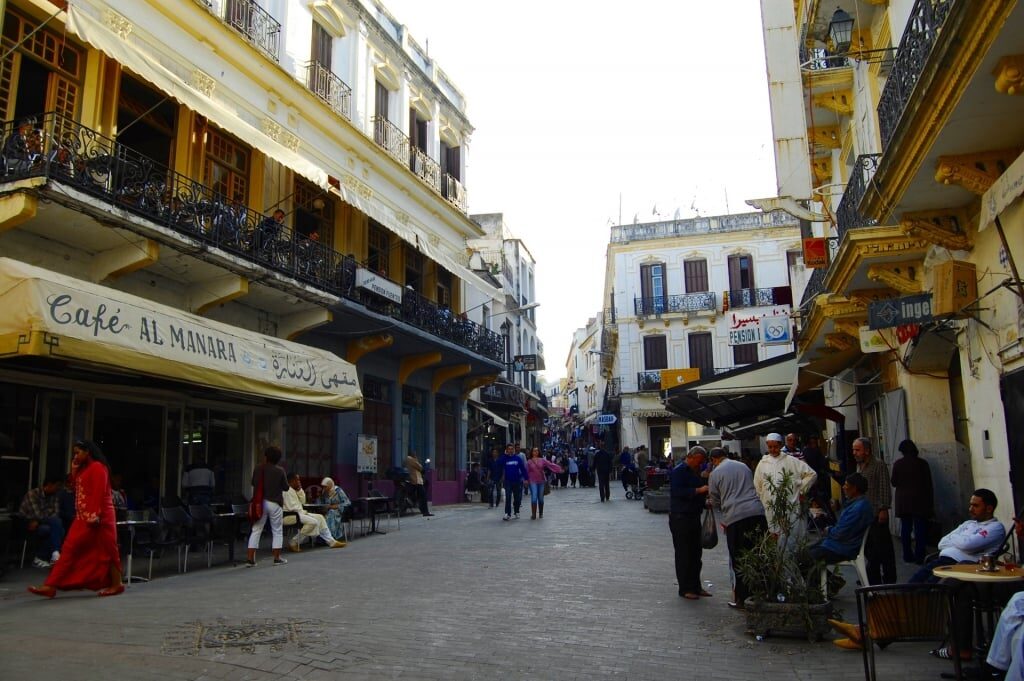
Petit Socco Photo by Andrzej Wójtowicz on Flickr, licensed under CC BY-SA 2.0
You can see these contrasts in the Petit Socco, a busy square in the heart of the medina. Sit over a mint tea in the Gran Café or one of its many neighbors and you will see a world of different people passing by.
Nearby is the Old American Legation, established in 1777, when Morocco was the first country to recognize the new United States. Inside this unique US National Historic Landmark, you will find James McBey’s painting “Zohra”—often called the “Moroccan Mona Lisa”.
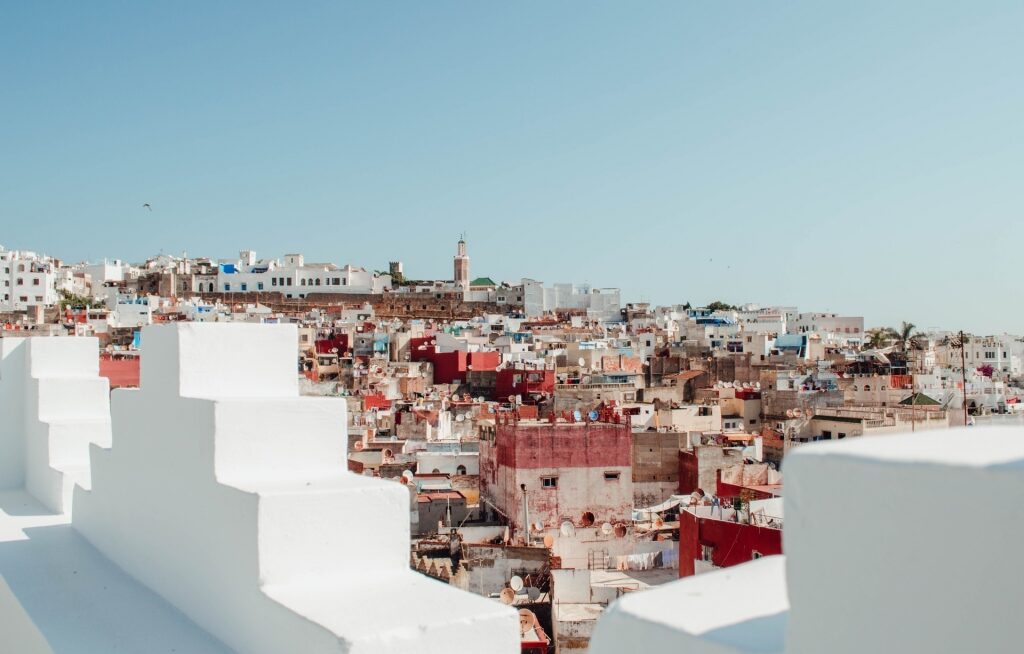
Tangier
The medina itself is a maze of alleys and tiny streets, its busy souk filled with exquisite crafts and the buzz of daily life. Much will seem familiar from the works of Henri Matisse, who was inspired by the colors and light of Tangier.
Escape the crowds in the tranquility of the Kasbah, the former palace that now holds a museum dedicated to crafts and calligraphy. The building is beautifully decorated with the hand-carved plasterwork and “zellij” mosaic tiling that Morocco is famous for.
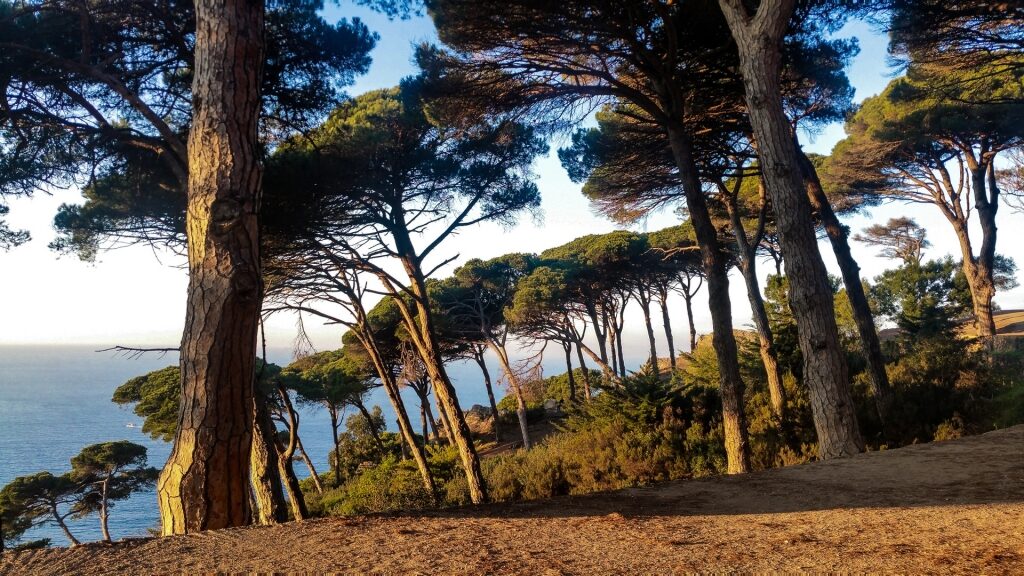
Parc Perdicaris, Tangier
To escape the city heat and enjoy fantastic views of the ocean, take a walk or on a bike ride in Parc Perdicaris. A guide will explain how former owner Ion Perdicaris’ kidnapping helped Roosevelt win the US presidency.
That history seems very far away when you stroll the tranquil, tree-shaded grounds of Perdicaris’ former home. They are a popular spot for a picnic, with many food vendors offering kebabs and other treats.
Only 20 minutes from Tangier is Cap Spartel, the most north-western point of mainland Africa. Marked by a picturesque lighthouse, its park is another place to enjoy a picnic and take in the view across the Strait of Gibraltar to Spain.
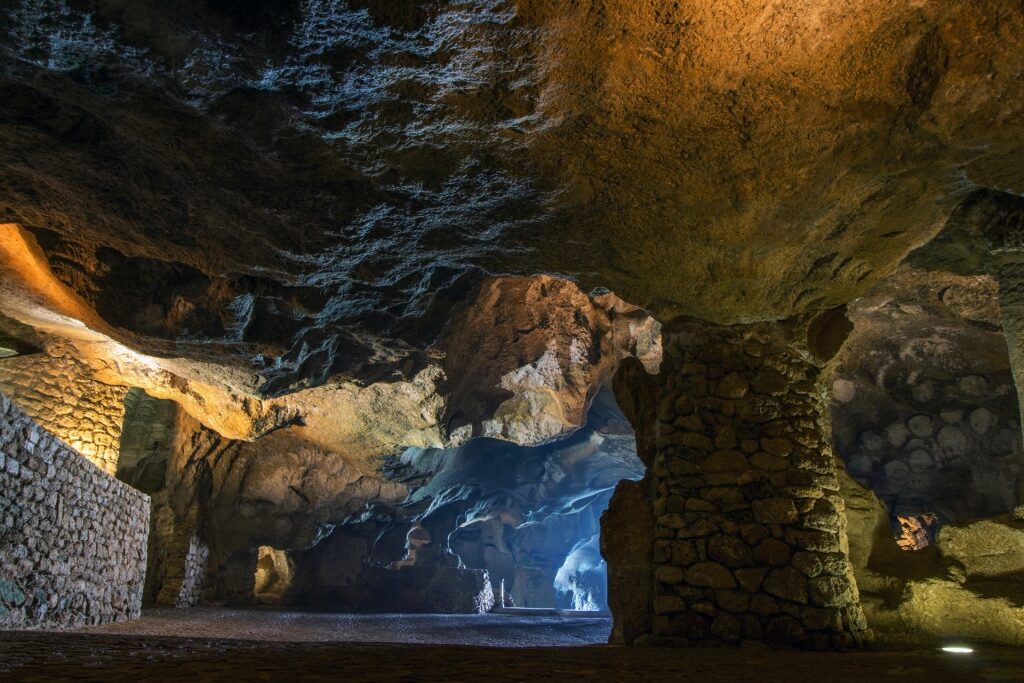
Caves of Hercules
This narrow channel separated the mythological Pillars of Hercules and below the cape are the Caves of Hercules. The Caves are partly former quarry and partly natural, but the whole place is a dramatic and beautiful sight.
Chefchaouen, the “Blue City”
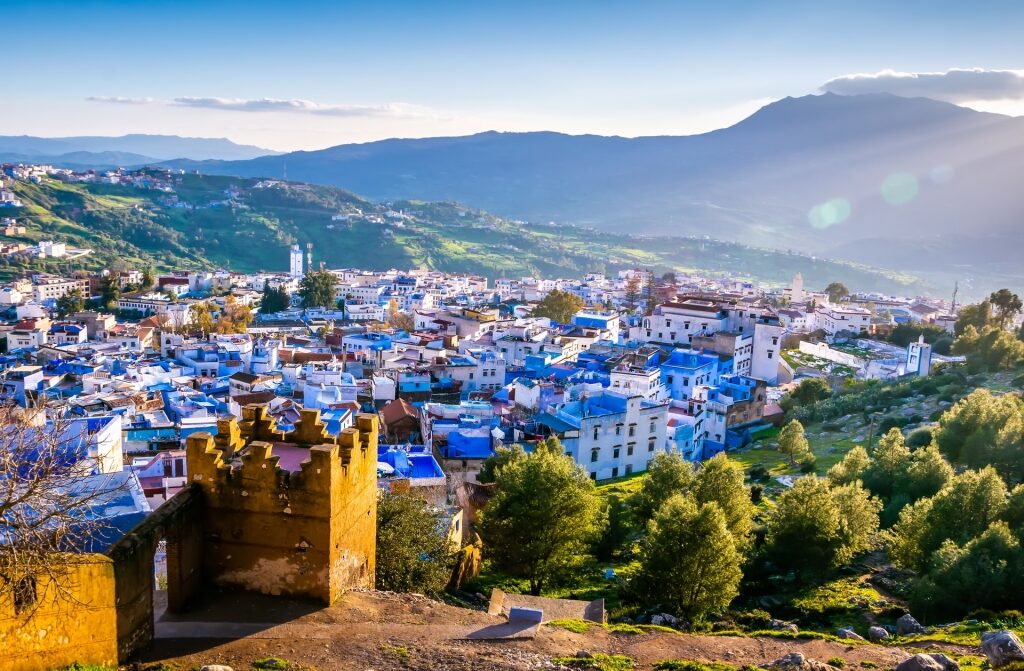
Chefchaouen
Reached on a day trip from Tangier is the quiet town of Chefchaouen, hidden away in the dramatic Rif Mountains. Known as Chaouen to Moroccans but famous as “the Blue City” worldwide, this has been a place of refuge for centuries.
It may have been Jewish arrivals fleeing Nazism in the 1930s who first painted their houses blue, a custom soon adopted by their Muslim neighbors. Now, the whole medina glows in a hundred different shades from azure to indigo against the stark mountain backdrop.
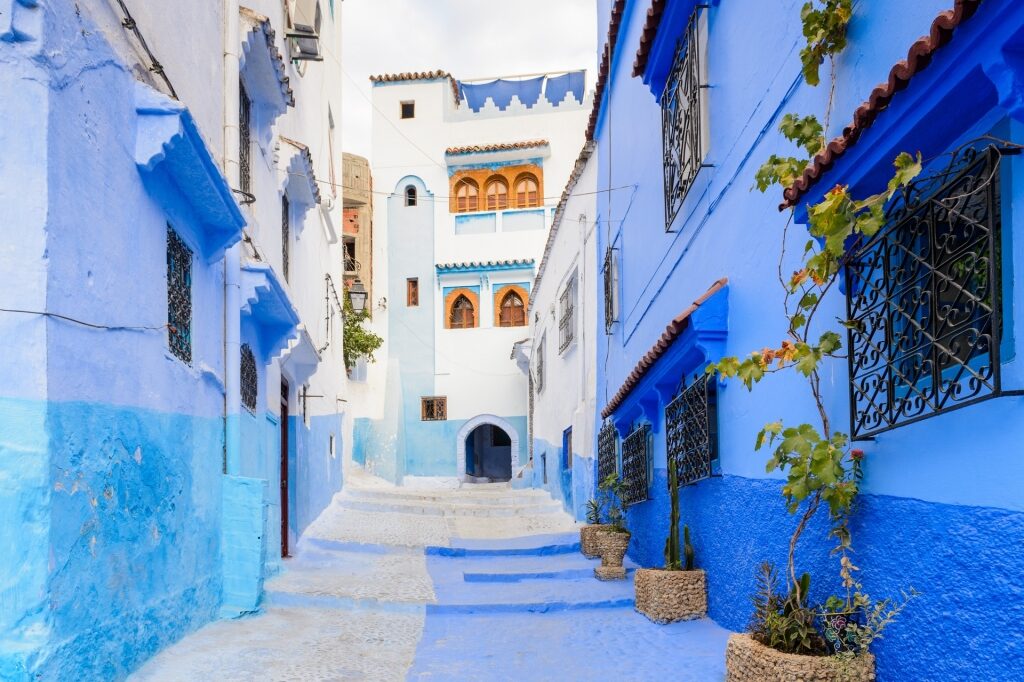
Chefchaouen
Once you stop taking photos—although that might be some time—you’ll discover that Chefchaouen is also filled with quaint craft shops and galleries. Wander the souk to look for a souvenir, or sit in a café on Plaza Uta el-Hammam to soak up the atmosphere.
To learn more about the town’s history, the Kasbah Museum is a short but interesting stop. Most visitors, however, come for the view over Chefchaouen from the ramparts.
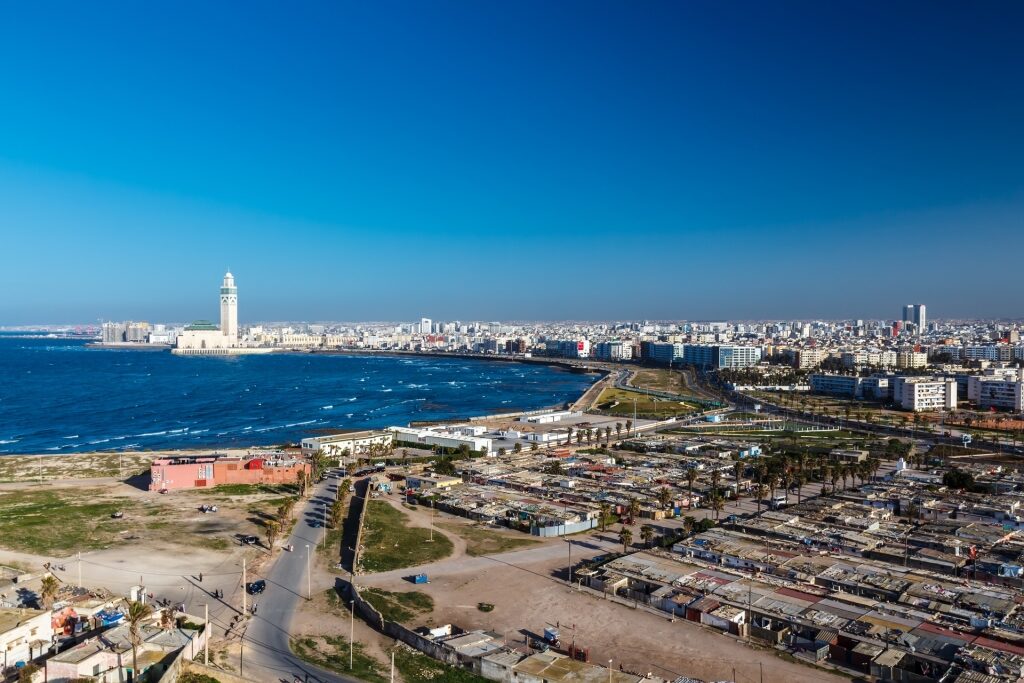
Casablanca
From rich cuisine and souks full of wonders, to magnificent landmarks and picturesque scenery, this mountainous destination on the fringe of the great Sahara is enchanting. Browse our cruises to Morocco on our website.
